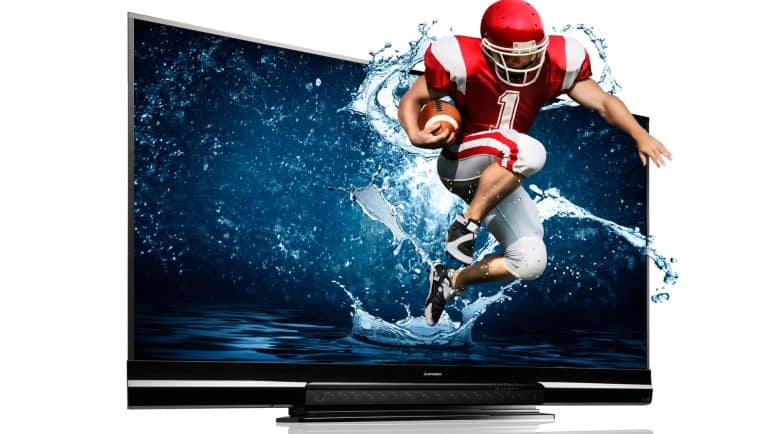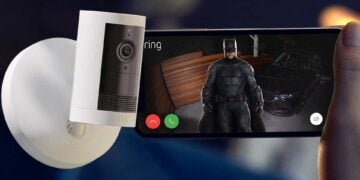Director James Cameron believes 3D TVs could return – but in a different way.
3D Technology
3D technology was a huge craze when it first came out. It has given rise to many theatrical experiences where cinemas incorporate surround sound and gyro-movement of seats; some even spray their audiences with water in dramatic waterfall scenes. Theatres will go the extra mile to make their audiences enjoy their experience. But what happened to 3D TV?
James Cameron is a world-famous director who is well-known for his long-term and very detailed projects, such as Avatar. He brought the Terminator franchise to life and has won many awards and even an Oscar for his efforts as a director. Cameron is also one of the biggest advocates for 3D movies, and his movie Avatar was one of the biggest films released in 3D on Blu-ray. The release of his movie in 3D spearheaded the 3D TV craze. Although 3D movies in theatres have remained popular since the sudden boom of 3D back in roughly 2010, 3D systems at home quickly declined in popularity.
IGN interviewed Cameron about why he thinks one of his favourite mediums failed to stay in the limelight.
3D TVs

James Cameron believes that the leading cause of why 3D TV failed to become mainstream was because the industry wanted to cash in on the experience and, in doing so, turned it into a feature. He said, “I know why all that failed because there was – what they did was they jumped into 3D trying to cash in on the boom of theatres and treat it as a feature.”
3D TVs were made possible with 3D glasses that needed regular charging to work and were not very comfortable, especially for those who already wore regular glasses. “So, they did 3D, but they did it with glasses that needed to be recharged and all that. Whereas just over the horizon were glasses-free, large flat screen TVs which actually look pretty good,” Cameron shared.
A theory that makes a lot of sense is that audiences watch movies at home differently than they do in the movie theatre. According to Cameron, home viewers don’t want bulky glasses over their eyes or anything that could distract them from the home experience, that is, multitasking and socializing with people in their living room around the TV. The home experience is about enjoying the movie together, whereas the theatre experience is about sitting facing forward and enjoying the movie alone, as it’s even frowned upon to speak too much during a movie at the theatre.
Why It Didn’t Catch On
The incentive to create glasses-free 3D TVs quickly overtook the need for making 3D TVs, as people simply didn’t enjoy them in their homes. According to the director, the “imperative to manufacture [glasses-free TVs], and the additional cost required got out of step with the market demand.”
Although many TV manufacturers held out hope that the technology would take off again, many big companies like LG, Samsung and Sony ended their support in 2017. Since then, a few glasses-free 3D panels have appeared on the market, but those never really took off either.
IGN asked Cameron if he thought that 3D TVs could ever make a comeback in modern society, and he seemed hopeful. “I think it could but can’t say because the home viewing experience is fundamentally different than the theatrical experience.”
In the meantime, Sony has been playing around with “Spacial Reality” monitors, which are a glasses-free experience that uses technology similar to what was used for the Nintendo 3DS to render 3D objects in front of the screen. So, the technology may not come back in the way we think it will, but it will be new and improved.
Tell us, would you like to see the return of the 3D TV?









There is/was a sizable niche of customers would want a decent 3D experience. It was always a niche though, I am very much a member of it. However, I never bought a 3D TV the technology was almost there with the polarized panels, but the luminosity was a limiting factor. The very last high end panels solved this, but the cost of high end 3D TVs was too high compared to a decent UHD TV to justify. I had to satisfy my 3D needs with a VR headset.
Another problem, which is barely ever mentioned, 3D really needs higher framerates than the cinematic 24fps or your eyes will struggle to track object movement. This leads to eye strain, headaches, and nausea. This is why VR headsets high such high refresh rates. I actually struggle watching 24fps 2D content because the motion is visually continuous and feels jarring, but it’s much worse with 3D. I know this is a controversial topic.
The TV producers should have just focused on 3D at the high end, with high contrast, high brightness, high refresh rate panels, a compromised 3D feature which impresses nobody wasn’t ever going to work. A quality 3D experience with high refresh rates would have at the very least spawned a lot of interest from gamers even if the media content providers considered it too small to target in the mainstream.